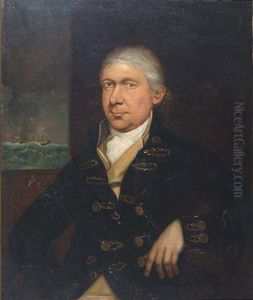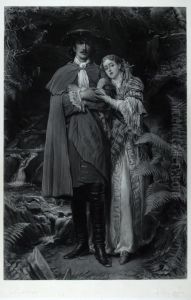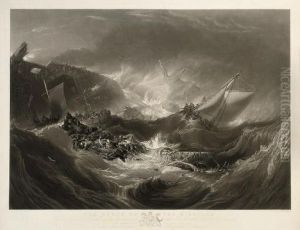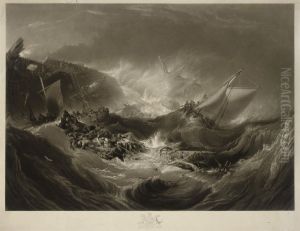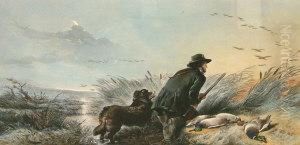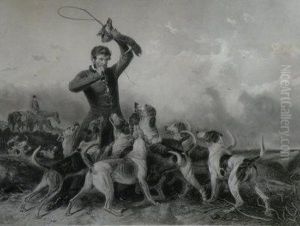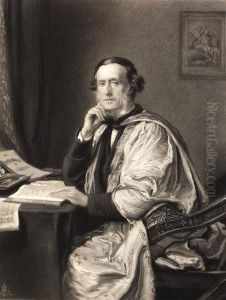Thomas Oldham Barlow Paintings
Thomas Oldham Barlow was a distinguished British engraver, born in Oldham, Lancashire, England, on August 4, 1824. He was recognized for his superb mezzotint engravings, which were pivotal in reviving this technique in England during the 19th century. Barlow was predominantly self-taught, developing his skills through diligent practice and observation of other artists' work. His talent in capturing detail and his ability to translate paintings into engravings that retained the original's depth and atmosphere made him a sought-after figure in the Victorian art world.
Beginning his career as an apprentice to the Manchester engraver John Saddler, Barlow moved to London in the 1840s. There, he worked with some of the most prominent artists of the day, such as Sir John Everett Millais and Sir Joseph Noel Paton. He gained widespread acclaim for his engravings of popular paintings, which allowed the Victorian middle class to own affordable reproductions of fine art. One of his most famous works is the engraving of Millais' painting 'The Proscribed Royalist, 1651,' demonstrating his exceptional skill in translating the subtleties of painting into print.
Barlow was not just a craftsman but also an influential figure in the British art community. He was a founding member of the Royal Society of Painter-Etchers and Engravers and was awarded numerous honors throughout his career, including being appointed as the Royal Engraver to Queen Victoria. His works were widely exhibited, including at the Royal Academy and the Paris Salon, where he was awarded a medal.
Thomas Oldham Barlow's contributions to art were recognized by his contemporaries and by posterity. His engravings served as a bridge between the original masterpieces of his time and the wider public, effectively democratizing art appreciation. He passed away on December 24, 1889, leaving behind a legacy as one of Britain's finest engravers. His works remain a testament to the skill and precision of mezzotint engraving and continue to be studied and appreciated by art historians and enthusiasts alike.
